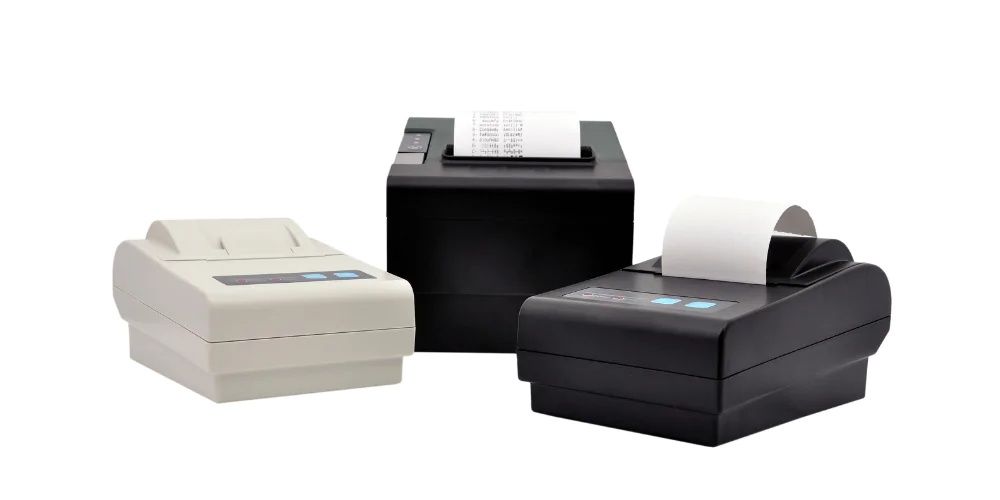Explore Label Printer Types: Guide, Insights, and Key Information
Label printers are specialized devices designed to create adhesive labels for products, packages, shipping, barcodes, and asset tracking. They exist because businesses and organizations need a reliable way to mark items with information for identification, compliance, and traceability.
Unlike standard office printers, label printers are optimized for high-volume and specialized tasks. They use methods such as thermal printing or inkjet technology to produce durable, scannable, and accurate labels. These printers are essential in industries like retail, healthcare, logistics, manufacturing, and warehousing, where labels provide critical information for operations.
Over the years, the evolution of supply chains, e-commerce growth, and the need for accurate tracking systems have made label printers a cornerstone of modern logistics and inventory management.
Importance
Label printers play a crucial role in everyday business operations and supply chain management. Their importance can be understood through several perspectives:
-
Accuracy and compliance – Proper labeling ensures products meet industry and government standards for safety and traceability.
-
Efficiency in logistics – Barcodes and QR codes generated by label printers speed up order picking, shipping, and delivery.
-
Inventory management – Labels allow real-time tracking of stock, reducing the risk of misplacement and errors.
-
Healthcare safety – Patient wristbands, lab samples, and medication packaging rely on high-quality labels to prevent mistakes.
-
Customer satisfaction – Clear product labels provide essential information such as expiry dates, instructions, and authenticity details.
Who it affects:
-
Warehouses and distribution centers use label printers for inventory tracking and order fulfillment.
-
Retailers and e-commerce companies rely on them for product labeling, barcodes, and shipping labels.
-
Manufacturers need labels for compliance, parts tracking, and safety instructions.
-
Healthcare providers use them to manage patient records, laboratory samples, and medications.
The problems they solve include reducing manual errors, ensuring compliance with regulations, improving tracking accuracy, and saving time in high-volume environments.
Recent Updates
In the last year, several key developments have shaped the use of label printers:
-
Eco-friendly labeling (2024): Manufacturers are shifting towards recyclable labels and energy-efficient printers to reduce environmental impact.
-
Integration with RFID (2024–2025): RFID-enabled label printers allow businesses to embed smart tracking chips directly into labels for advanced supply chain management.
-
Mobile label printing (2025): Handheld and wireless label printers are increasingly popular for warehouses and field operations.
-
Cloud integration (2024): Cloud-based printing platforms now allow centralized label management across multiple facilities.
-
High-resolution graphics (2025): Advanced thermal transfer printers provide sharper, more durable labels, essential for industries requiring compliance with detailed labeling standards.
These updates reflect the growing demand for smarter, greener, and more connected labeling solutions.
Laws or Policies
Labeling is not only a business necessity but also a regulatory requirement. Policies and rules impact how labels are created and what information they must include.
-
Product safety laws: In the US, the Food and Drug Administration (FDA) requires specific labeling for food, drugs, and medical devices.
-
Trade compliance: Customs and trade authorities require shipping labels to include harmonized codes, country of origin, and proper documentation.
-
Consumer protection: The European Union enforces strict rules for product labeling, including ingredients, expiration dates, and safety warnings.
-
Hazardous material labeling: Globally, chemical products must comply with the Globally Harmonized System (GHS) for hazard communication.
-
Data security and traceability: RFID and barcode labels must comply with privacy and security regulations to ensure responsible data handling.
These rules make label printers an essential tool for meeting compliance requirements while supporting efficiency.
Tools and Resources
A variety of tools, platforms, and resources support businesses in managing label printing needs.
-
Label printer types
-
Direct thermal printers: Ideal for shipping labels and short-term use.
-
Thermal transfer printers: Best for durable, long-lasting labels.
-
Inkjet label printers: Suitable for high-quality, color-intensive labels.
-
Industrial label printers: Heavy-duty machines for large warehouses and factories.
-
RFID label printers: Advanced printers that embed tracking technology.
-
-
Software tools
-
Label design software such as BarTender, NiceLabel, and Zebra Designer.
-
Cloud-based platforms that integrate with warehouse management systems.
-
-
Accessories
-
Barcode scanners, RFID readers, and handheld devices for integration with labeling workflows.
-
-
Templates and checklists
-
Standard barcode formats (EAN, UPC, QR).
-
Compliance checklists for product and shipping labels.
-
Printable templates for small businesses managing inventory.
-
Comparison Table: Label Printer Types
| Printer Type | Use Case | Durability | Cost Efficiency | Example Industries |
|---|---|---|---|---|
| Direct Thermal | Shipping, temporary labels | Short-term | High | Logistics, e-commerce |
| Thermal Transfer | Long-lasting, durable labels | Long-term | Medium | Manufacturing, chemicals |
| Inkjet | High-quality graphics, colors | Medium | Low | Retail, marketing |
| Industrial | Large-scale, heavy-duty operations | Long-term | Medium | Warehousing, factories |
| RFID Label Printers | Smart tracking, asset management | Long-term | Medium | Supply chain, healthcare |
FAQs
What is the difference between direct thermal and thermal transfer label printers?
Direct thermal printers use heat-sensitive paper and are best for short-term labels like shipping. Thermal transfer printers use a ribbon and create longer-lasting, durable labels.
Which industries benefit most from RFID label printers?
Industries like healthcare, automotive, and global logistics benefit from RFID printers because they enable real-time tracking and asset management.
Are label printers required by law for compliance?
In many industries, yes. Food, pharmaceuticals, and chemical sectors often require specific labeling standards that necessitate reliable label printers.
Can mobile label printers replace industrial ones?
No, mobile printers are convenient for on-the-go labeling but cannot handle the same volume and durability needs as industrial label printers.
How do eco-friendly label printers work?
Eco-friendly label printers reduce energy consumption and use recyclable label materials, helping companies meet sustainability goals.
Conclusion
Label printers are essential tools that support accuracy, compliance, and efficiency across industries. From small businesses needing basic shipping labels to large-scale enterprises requiring RFID-enabled solutions, different label printer types meet diverse needs.
Recent trends show a shift toward smarter, more connected, and eco-friendly solutions, with mobile and RFID printers gaining popularity. At the same time, global regulations ensure that labels continue to play a critical role in consumer safety and trade compliance.
By understanding the types of label printers, their importance, and the latest updates, businesses can make informed decisions that improve operational efficiency and ensure compliance with industry standards.



